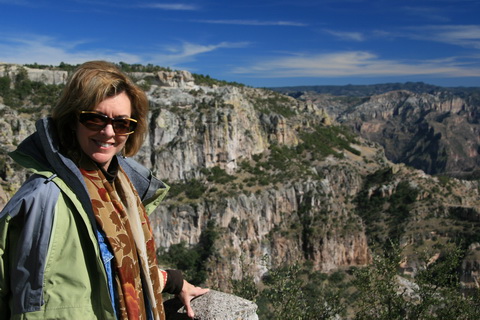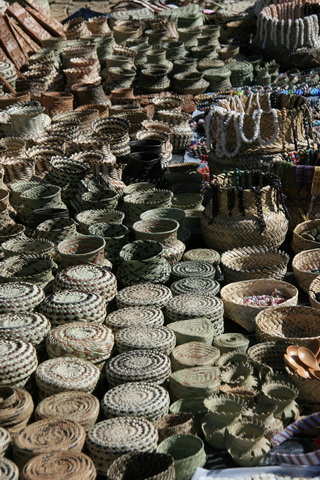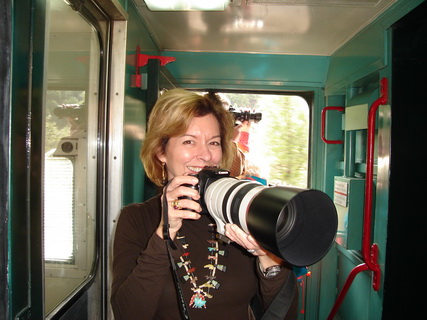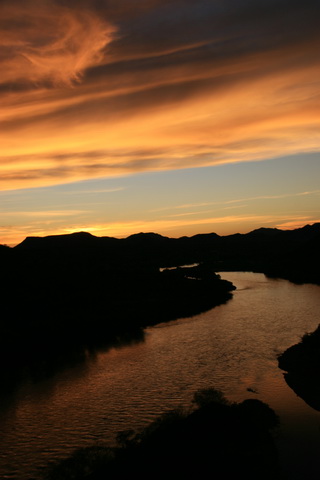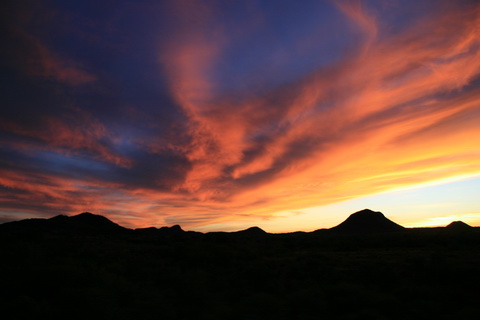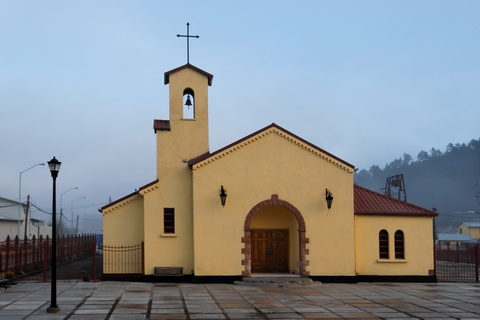
Cal was up early to get good light roaming the streets of Creel.
The mission is tiny and was not open the morning we were there.

Fortunately the fog burned off and the rest of the day was pleasant.
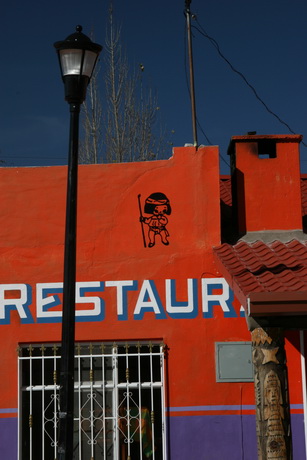
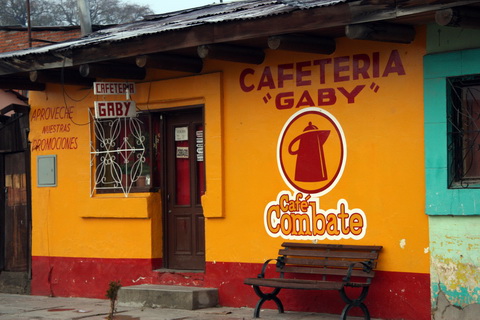

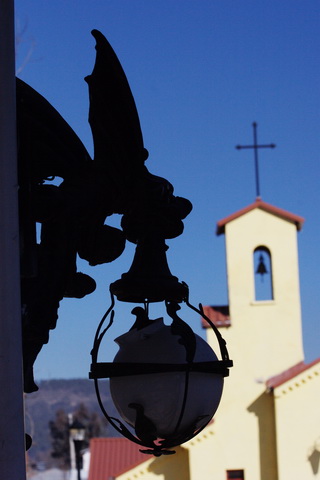
This is on the bandstand but they were many on the streetlights.
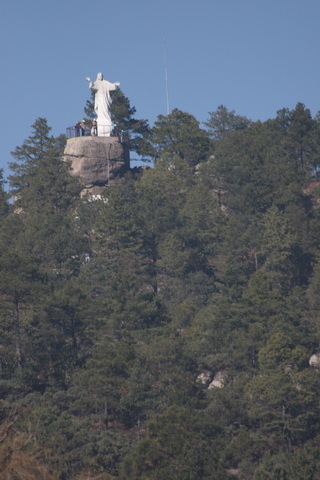
This photograph was taken from the train station while we waited for the Copper Canyon train.
Several members of the California hiking group went up to the statue on an early morning hike.
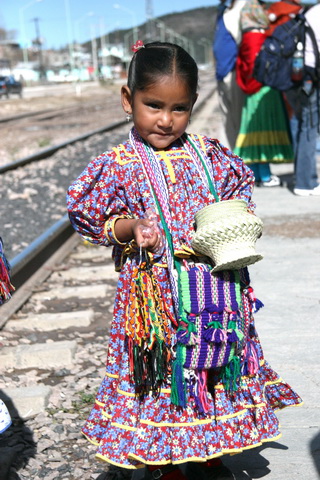
The Tarahumara people are the native inhabitants of the Copper Canyon. They number over 50,000, are shy, and famous for their handicrafts and dancing.
The Tarahumara are well known for their running ability. In their language they call themselves Raramuri, which means 'those who run fast'. They can hunt down a deer by chasing it until the deer collapses from exhaustion.
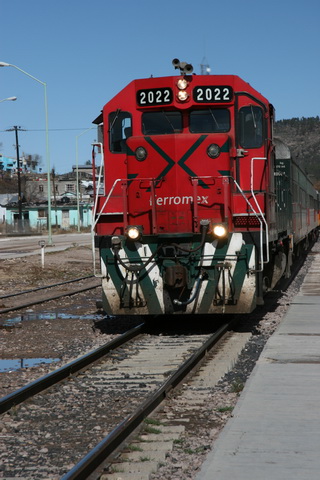
The railroad took 90 years for construction at a cost of $90 million - completed in 1961.
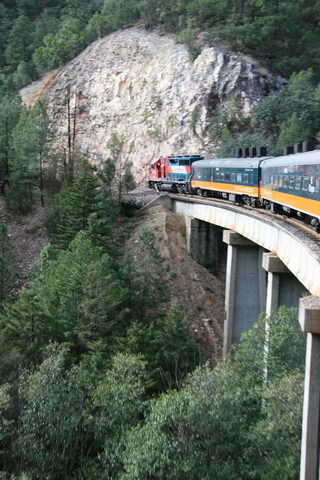
We rode in a First Class car which was roomy. The cars were refurbished in 1999.
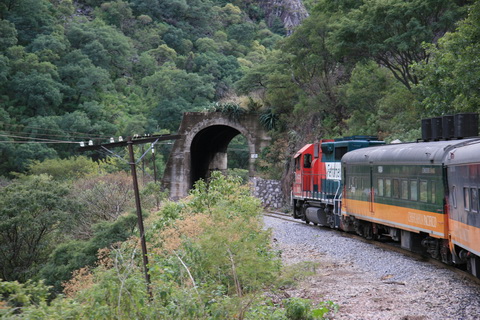
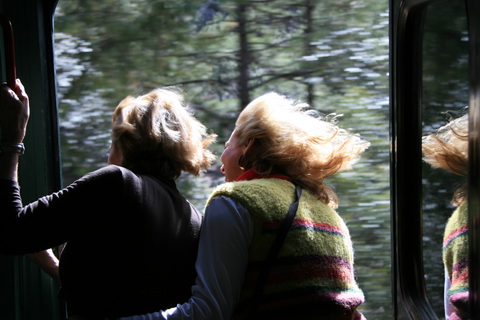

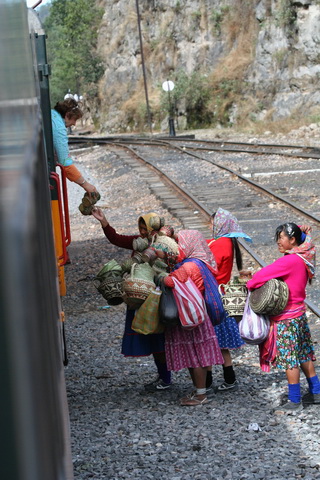
These baskets would become the subject of much attention and jokes for at every stop we would have the opportunity to purchase and everyone tried. At the end of the trip there were several travelers carrying large loads of baskets.
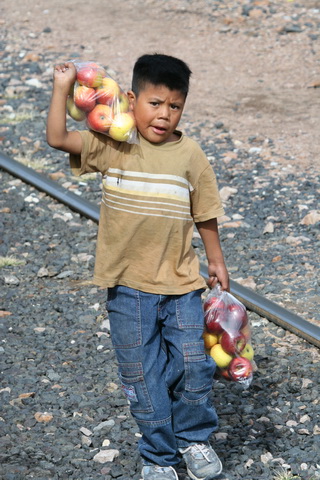
Chihuahua has about 75,000 acres of orchards and produces about 60 percent of the Mexican apple crop. Fresh apple production has averaged just under 16 million boxes over the past five years.
Cal bought one bag of these apples for 2 dollars.

This is the town of Temoris and in this valley the train winds back and forth over three levels of train track.
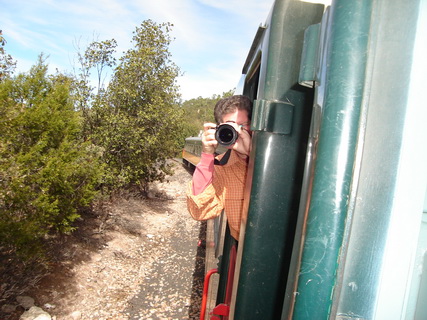
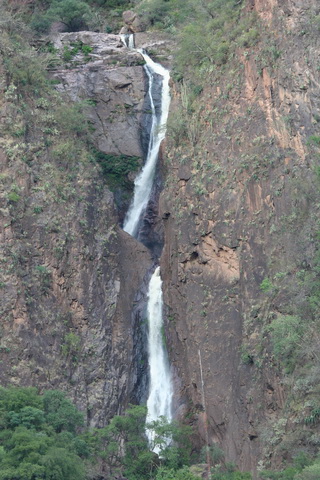
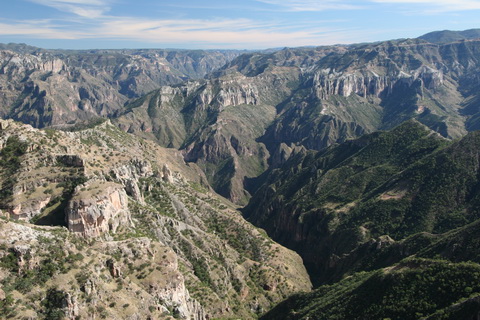
The 25,000 square mile area of the Sierra de Tarahumaras lies in the heart of the Serra Madre Mountains. The first major canyons are collectively known as the Copper Canyon. Overall, the canyon is five times wider and one and a half times deeper than the Grand Canyon.
